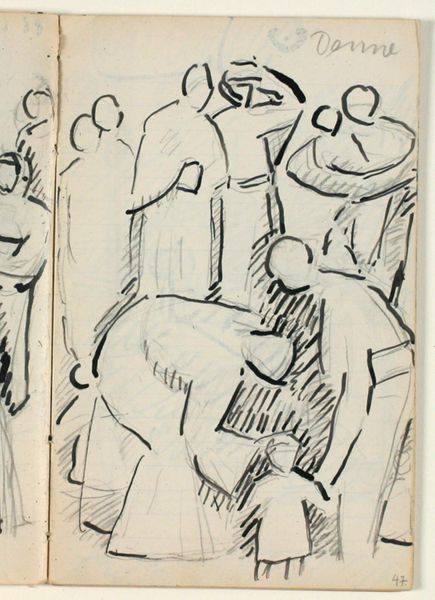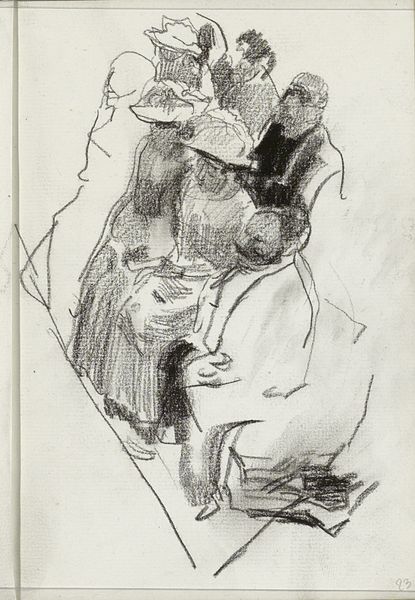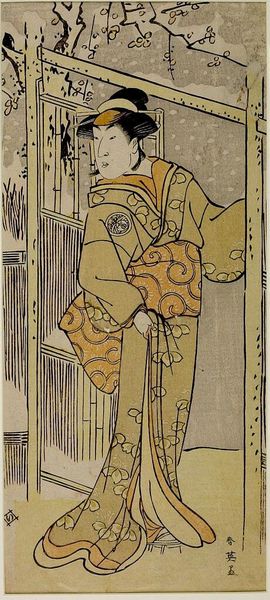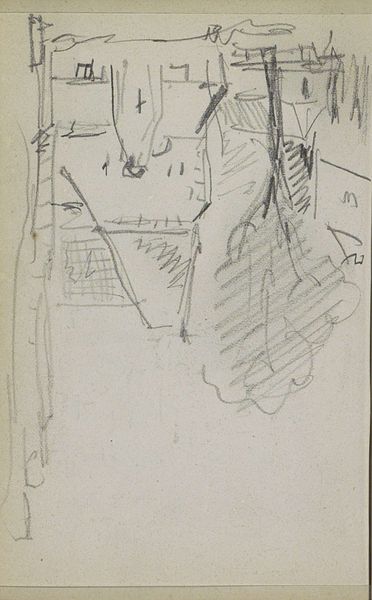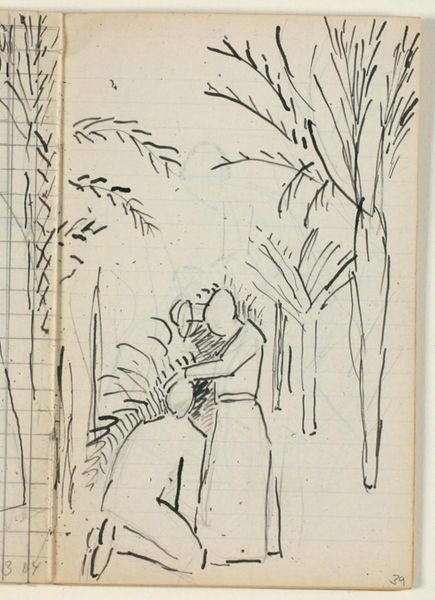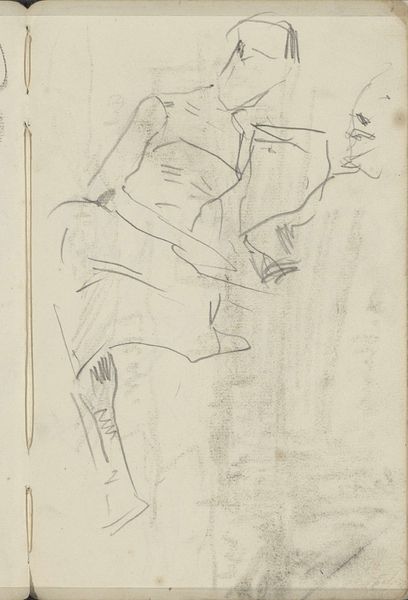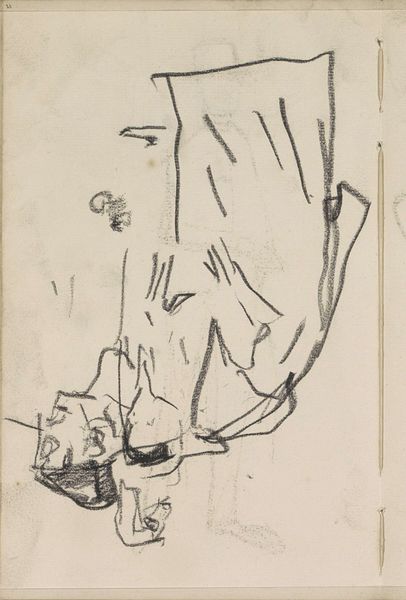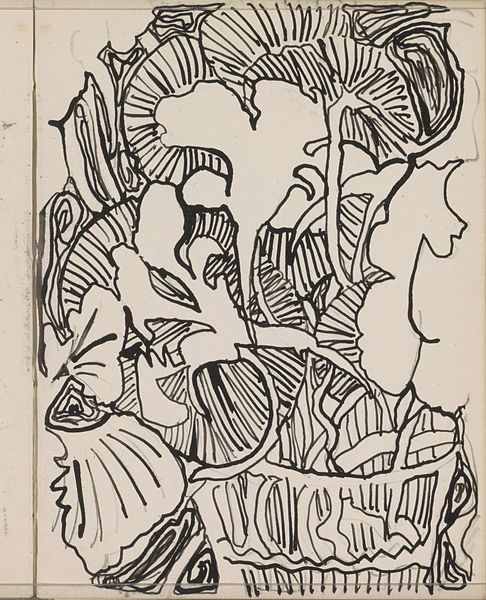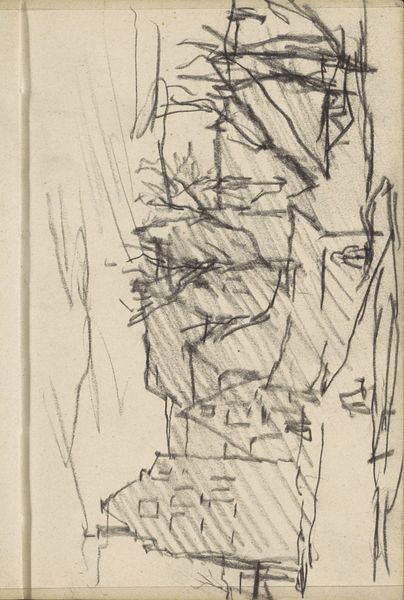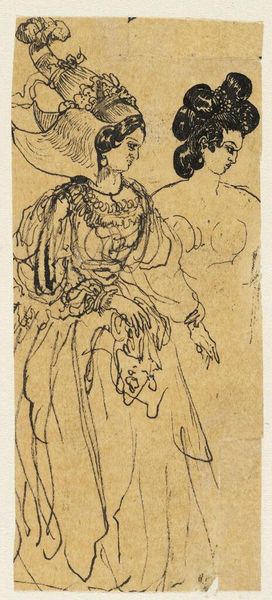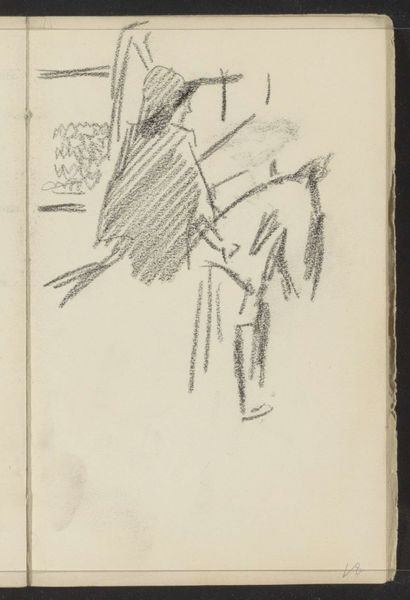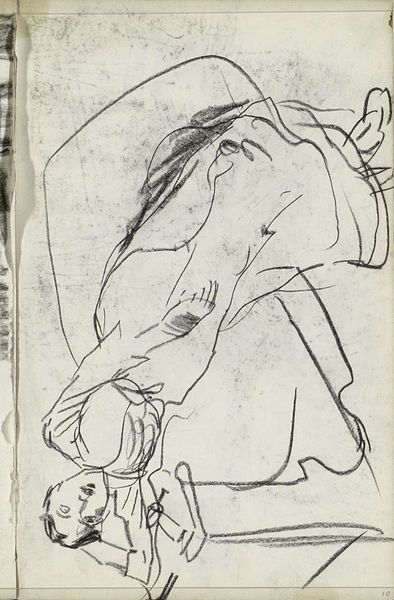
drawing, ink
#
drawing
#
pen illustration
#
figuration
#
ink
#
line
Copyright: Rijks Museum: Open Domain
Curator: This is "Vrouw die eten schoonmaakt aan een tafel," or "Woman Cleaning Food at a Table," an ink and pen drawing created around 1919. It currently resides in the Rijksmuseum collection. Editor: It's… striking. The starkness of the black ink on paper is kind of brutal. Like a momentary sketch ripped from the everyday drudgery of someone’s life. Curator: Indeed. The sparseness emphasizes line work and form. But is it merely drudgery? Look closer. See the dense pattern covering what could be an apron or tablecloth? That meticulousness speaks of tradition and domestic craft. Editor: True. But it also feels confining, right? Like she’s trapped within that web of repeated crosses. The lines on the left…are they the seat of the chair, like she’s forever confined to kitchen tasks. There's also a figure in the upper left that kind of looms over her. It has such big jowls, a sinister face. Is it watching her from above? Curator: Perhaps. Or it might simply denote someone else at the table; it's so gestural it's difficult to say for certain, but such repetition in imagery is typical of this artist, Reijer Stolk. As with any figure or table pattern, this kind of image could hold deeply embedded religious, social, or regional connotations to an early 20th century eye, whether we fully grasp it or not now. Editor: Maybe, but honestly, my gut says there's more going on here. See how simplified the figure is? The lines… there’s something unresolved, melancholic. The figure almost blends with her environment. I think that's quite suggestive, isn't it? The labor isn't just something she does; it's part of her identity, perhaps one forced onto her. Curator: It’s interesting how the use of very simple lines creates quite complex meanings! As iconographers, we know images bear accumulated layers of emotional and cultural expression; perhaps Stolk himself was working through personal or collective feelings of unrest after World War I ended the year before the work was created, leaving a wake of emotional hardship for many across the Netherlands. Editor: Hmm, an unresolved personal history inscribed onto a kitchen scene, huh? Curator: A potent idea indeed. Editor: Well, whether we see it as societal observation or something more emotionally raw, it definitely lingers in the mind! Thanks for highlighting some points about its history and technique. It’s hard to dismiss those eyes now, those huge ears. Haunting.
Comments
No comments
Be the first to comment and join the conversation on the ultimate creative platform.

